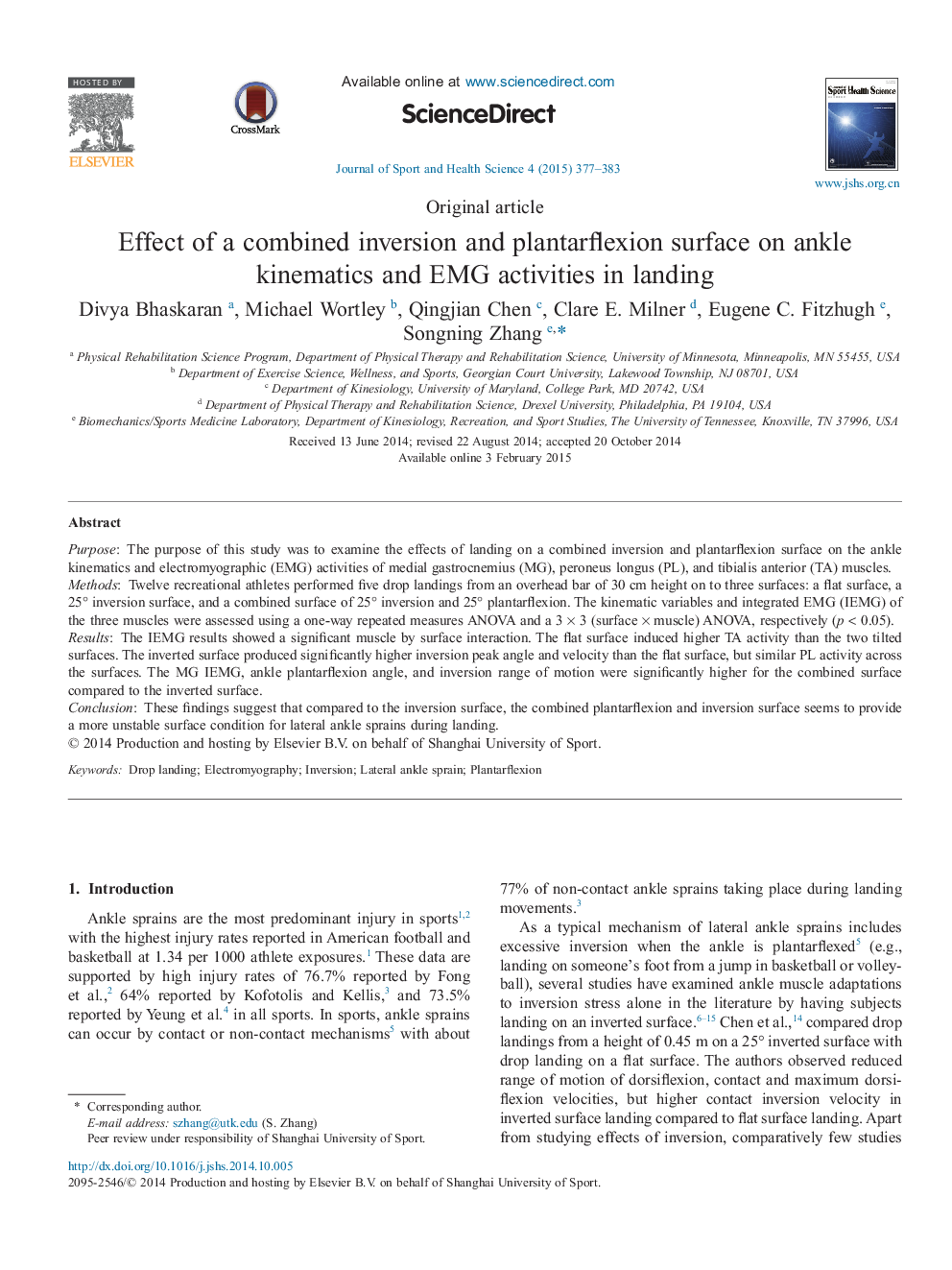| کد مقاله | کد نشریه | سال انتشار | مقاله انگلیسی | نسخه تمام متن |
|---|---|---|---|---|
| 1084101 | 951258 | 2015 | 7 صفحه PDF | دانلود رایگان |

PurposeThe purpose of this study was to examine the effects of landing on a combined inversion and plantarflexion surface on the ankle kinematics and electromyographic (EMG) activities of medial gastrocnemius (MG), peroneus longus (PL), and tibialis anterior (TA) muscles.MethodsTwelve recreational athletes performed five drop landings from an overhead bar of 30 cm height on to three surfaces: a flat surface, a 25° inversion surface, and a combined surface of 25° inversion and 25° plantarflexion. The kinematic variables and integrated EMG (IEMG) of the three muscles were assessed using a one-way repeated measures ANOVA and a 3 × 3 (surface × muscle) ANOVA, respectively (p < 0.05).ResultsThe IEMG results showed a significant muscle by surface interaction. The flat surface induced higher TA activity than the two tilted surfaces. The inverted surface produced significantly higher inversion peak angle and velocity than the flat surface, but similar PL activity across the surfaces. The MG IEMG, ankle plantarflexion angle, and inversion range of motion were significantly higher for the combined surface compared to the inverted surface.ConclusionThese findings suggest that compared to the inversion surface, the combined plantarflexion and inversion surface seems to provide a more unstable surface condition for lateral ankle sprains during landing.
Journal: Journal of Sport and Health Science - Volume 4, Issue 4, December 2015, Pages 377–383